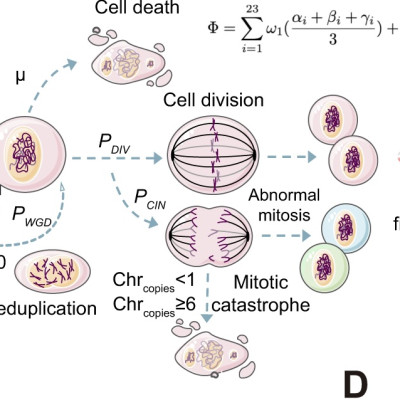Publication
Chromosomal instability in aneuploid acute lymphoblastic leukemia associates with disease progression
O Molina, C Ortega-Sabater, N Thampi, N Fernández, M Guerrero, A Martínez, M Vinyoles, T Velasco, C Bueno, JL Trincado, I Granada, D Campos, C Giménez, JM Boer , ML den Boer, GF Calvo, Mireia Camós, JL Fuster P Velasco, P Ballerini, F Locatelli, CG Mullighan, DCJ Spierings, F Foijer, VM Pérez-García, P Menéndez
EMBO Molecular Medicine 16, 64-92 (2024)
MOLAB authors
Abstract
Chromosomal instability (CIN) lies at the core of cancer development leading to aneuploidy, chromosomal copy-number heterogeneity (chr-CNH) and ultimately, unfavorable clinical outcomes. Despite its ubiquity in cancer, the presence of CIN in childhood B-cell acute lymphoblastic leukemia (cB-ALL), the most frequent pediatric cancer showing high frequencies of aneuploidy, remains unknown. Here, we elucidate the presence of CIN in aneuploid cB-ALL subtypes using single-cell whole-genome sequencing of primary cB-ALL samples and by generating and functionally characterizing patient-derived xenograft models (cB-ALL-PDX). We report higher rates of CIN across aneuploid than in euploid cB-ALL that strongly correlate with intraclonal chr-CNH and overall survival in mice. This association was further supported by in silico mathematical modeling. Moreover, mass-spectrometry analyses of cB-ALL-PDX revealed a “CIN signature” enriched in mitotic-spindle regulatory pathways, which was confirmed by RNA-sequencing of a large cohort of cB-ALL samples. The link between the presence of CIN in aneuploid cB-ALL and disease progression opens new possibilities for patient stratification and offers a promising new avenue as a therapeutic target in cB-ALL treatment.














